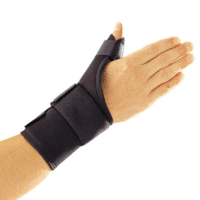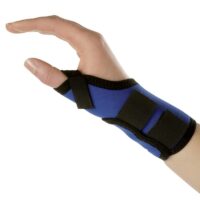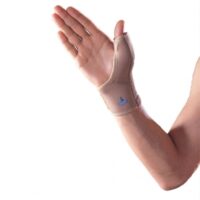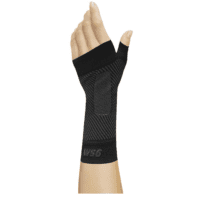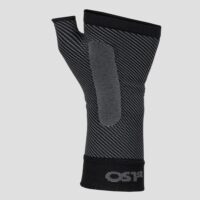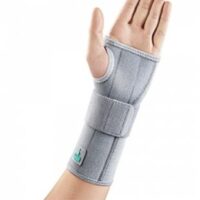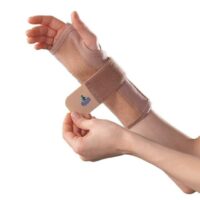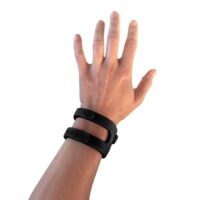Wrist Tendinopathy
Article by John Miller

Wrist Tendinopathy
Wrist Tendonitis/Wrist RSI
What is Wrist Tendinopathy?
Wrist tendinopathy is the umbrella term for wrist injuries that include:
- Wrist tendonitis/tendinitis (an inflammed tendon).
- Wrist tendinosis (a non-inflammed degenerative tendon).
- Wrist tenosynovitis (an inflammed tendon sheath).
Old habits die hard, and wrist tendinopathies have a history of wrist tendonitis or wrist RSI. This terminology is probably due to the most common mechanism of injury, which is repetitive overuse of the wrist tendons that results in an inflammatory reaction. Modern physiotherapists and doctors will describe injuries as wrist tendinopathy.
Where Are Your Wrist Tendons?
The anatomy of the wrist and forearm is essential in understanding wrist tendinopathy. The wrist and forearm are rectangular in shape. It has two wider sides (dorsal and volar/palm side). The thinner thumb side is your radial side, and the pinky finger is on the ulnar side. These two sides names derive from the bones that run on those aspects.
Your wrist extensor muscles and tendons bend your hand backwards. Your wrist flexors close your fingers to create a fist.
Your wrist muscles are located high on the forearm towards the elbow. They act upon your tendon, which traverses your wrist and hand. The tendons travel through synovial sheath tunnels and across bone interfaces, where most inflammation – usually friction-related – occurs.
What Causes Wrist Tendinopathy?
Wrist tendinopathy is primarily an overuse, tendon impingement, or repeated tendon slide issue. Therefore, it depends upon the workload and posture of your upper limb that may cause the tendon to bend excessively over a period. It is common in sports that involve gripping. Occupations that require repetitive work, e.g. typing, are at risk.
What are the Symptoms of Wrist Tendinopathy?
Wrist tendonitis and tendinopathy sufferers will commonly report:
- Pain in the region of the wrist tendons, occasionally radiating down to the hand or up into the elbow.
- Gripping or typing activities usually reproduce pain, especially those positions that combine wrist bending or twisting, e.g. keyboard typing with an unergonomic setup.
- The pain aggravates with repeated finger or wrist movement.
- Some patients describe clicking, grating or snapping with hand or wrist movements. Thumb movement issues may be de Quervain’s Tenosynovitis.
- Muscle weakness can be associated with neural entrapment, e.g. Carpal Tunnel Syndrome.
- The symptoms alleviate with rest and ice.
How is Wrist Tendinopathy Diagnosed?
Based on your symptoms and history, your physiotherapist or doctor may suggest wrist tendinopathy. Ultrasonography and MRI are the best investigations to confirm the diagnosis. For specific diagnostic advice for your wrist injury, please consult your trusted upper limb healthcare practitioner.
Wrist Tendinopathy Treatment
Rest & Patient Education
Resting from the aggravating cause is essential. Education and awareness about the symptoms and what positions or activities potentially cause wrist tendinopathy is necessary.
Night Wrist Splint
A nighttime wrist splint is beneficial to eliminate wrist bending and, therefore, wrist tendinopathy symptoms. Your physiotherapist may recommend a brace. A suitable wrist block splint will help you.
Physiotherapy
Physiotherapy is beneficial for most wrist tendinopathy sufferers.
Your physiotherapist will address:
- Carpal bone mobilisation
- Nerve and tendon gliding exercises to ensure full unrestricted nerve motion is available.
- Muscle and soft tissue extensibility.
- Cervicothoracic spine to correct any referral or double crush syndromes.
- Grip and pinch, thumb abduction and forearm strengthening in later phases.
- Extensive upper limb, wrist and hand ROM, strengthening and endurance exercises.
- Posture, fine motor and hand dexterity exercises.
- Ergonomic assessment.
Ultrasound Therapy, Acupuncture, Massage & Yoga
Ultrasound therapy may assist in wrist tendinopathy. Acupuncture or dry needling may decrease wrist tendinopathy pain.
Targeted massage can assist grip strength in wrist tendinopathy sufferers.
Yoga focusing on upper body flexibility can improve grip strength quicker than wrist splints alone.
Ergonomic Assessment
If your wrist tendinopathy has interrupted your work, then an ergonomic assessment of the workplace and work practices may be worthwhile to prevent a recurrence. Activity modification may be required. Larson & Ellexson (2000).
See Online Ergonomic Assessment.
TENS Machine
A TENS machine (transcutaneous electrical muscle stimulation) may ease the pain associated with wrist tendinopathy. Discover more information about TENS machines here: Tens Machine
Carpal Tunnel Surgery
The American Academy of Orthopaedic Surgeons (AAOS) recommends non-surgical treatment initially. Before you undertake wrist tendinopathy surgery, you must check all the other possible sources. Corticosteroid injection may be trialled.
Prognosis?
Wrist tendinopathy sufferers have a favourable prognosis via conservative treatment. The best results occur within the first few weeks of treatment.





